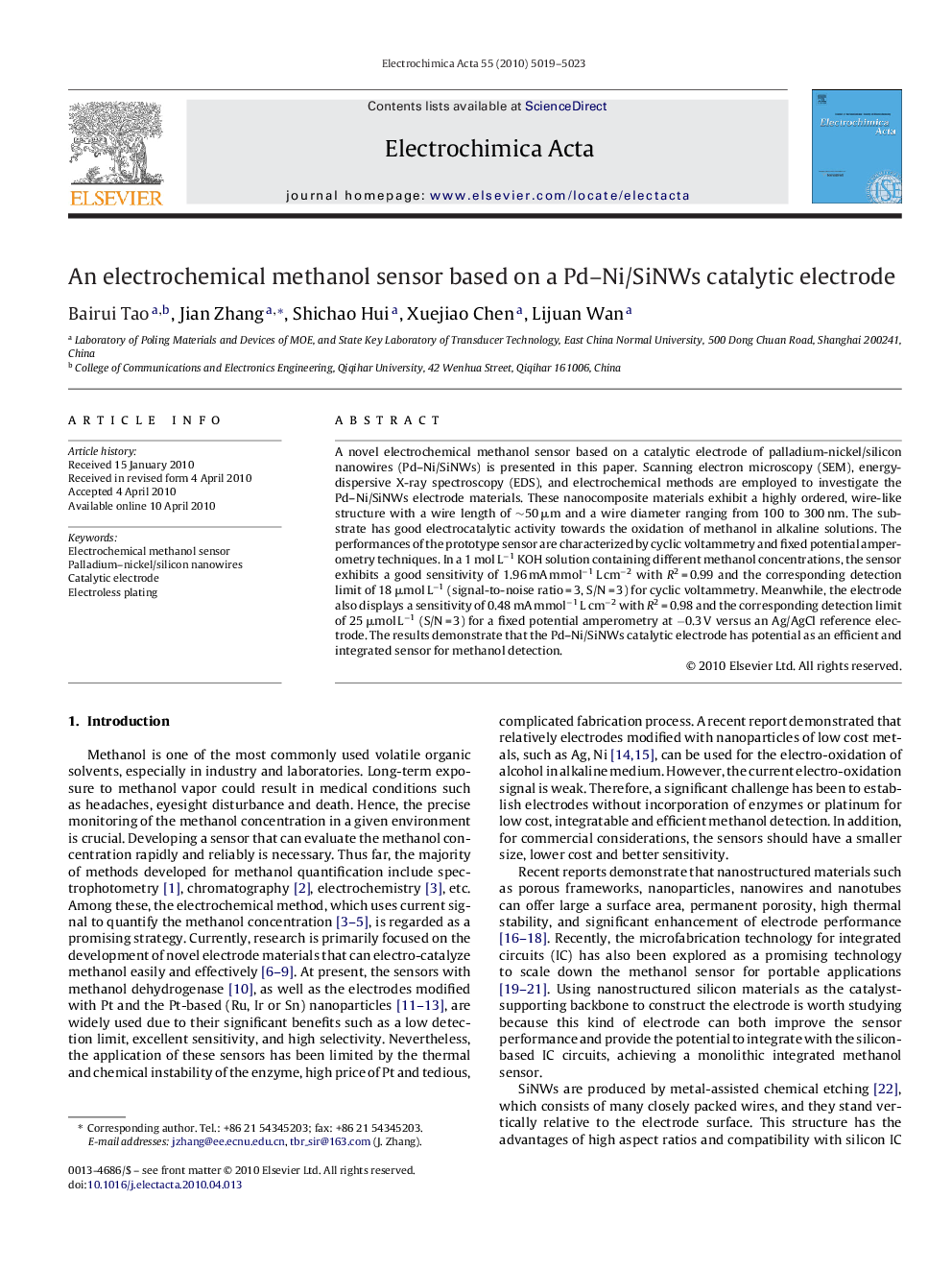| Article ID | Journal | Published Year | Pages | File Type |
|---|---|---|---|---|
| 190580 | Electrochimica Acta | 2010 | 5 Pages |
A novel electrochemical methanol sensor based on a catalytic electrode of palladium-nickel/silicon nanowires (Pd–Ni/SiNWs) is presented in this paper. Scanning electron microscopy (SEM), energy-dispersive X-ray spectroscopy (EDS), and electrochemical methods are employed to investigate the Pd–Ni/SiNWs electrode materials. These nanocomposite materials exhibit a highly ordered, wire-like structure with a wire length of ∼50 μm and a wire diameter ranging from 100 to 300 nm. The substrate has good electrocatalytic activity towards the oxidation of methanol in alkaline solutions. The performances of the prototype sensor are characterized by cyclic voltammetry and fixed potential amperometry techniques. In a 1 mol L−1 KOH solution containing different methanol concentrations, the sensor exhibits a good sensitivity of 1.96 mA mmol−1 L cm−2 with R2 = 0.99 and the corresponding detection limit of 18 μmol L−1 (signal-to-noise ratio = 3, S/N = 3) for cyclic voltammetry. Meanwhile, the electrode also displays a sensitivity of 0.48 mA mmol−1 L cm−2 with R2 = 0.98 and the corresponding detection limit of 25 μmol L−1 (S/N = 3) for a fixed potential amperometry at −0.3 V versus an Ag/AgCl reference electrode. The results demonstrate that the Pd–Ni/SiNWs catalytic electrode has potential as an efficient and integrated sensor for methanol detection.
